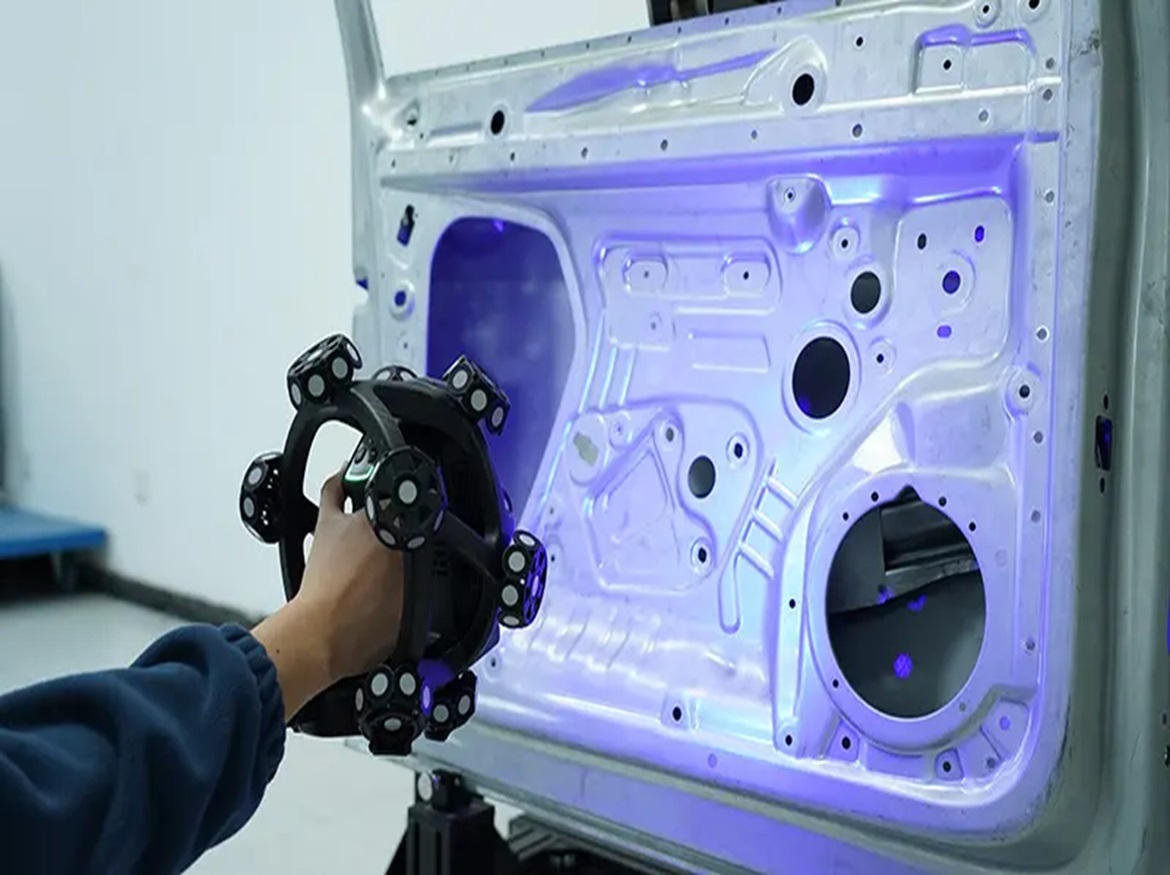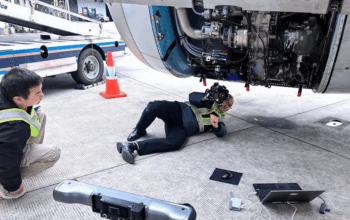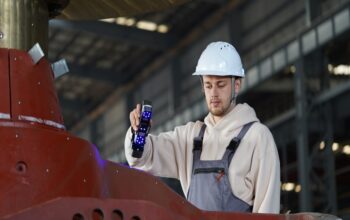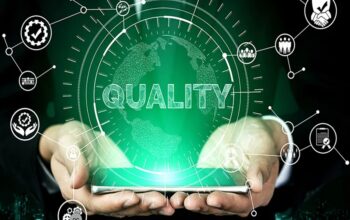In the field of 3D modeling, several advanced technologies are aimed at capturing and creating detailed digital representations of real-world objects and environments.
These technologies have revolutionized industries such as architecture, engineering, and entertainment by enabling precise and efficient modeling processes.
Among the most prominent techniques are photogrammetry and laser scanning. Both methods are capable of creating accurate 3D models, but they employ vastly different approaches.
Gain insights into the strengths and weaknesses of photogrammetry and laser scanning in 3D applications. Discover which technology is best suited for your project.
What is Photogrammetry?
Photogrammetry is a technique that utilizes photographs to measure and interpret physical objects or environmental features.
By analyzing multiple images taken from different angles, photogrammetry can reconstruct a 3D model of an object or scene.
The fundamental principle of photogrammetry is triangulation, where the precise positions of points on an object are determined using intersection points of lines of sight from multiple images.
This method enables accurate measurements and 3D reconstruction without the need for physical contact with the object.

Operating Principles
Image Capture
The first step in photogrammetry is to capture a series of overlapping photos of the object or scene from different angles.
This can be accomplished using standard digital cameras, drones, or specialized photogrammetric cameras. It is crucial to ensure sufficient overlap between the images for accurate triangulation.
Software Processing
After capturing the images, they are imported into photogrammetry software. The software identifies common points in the overlapping images and uses these points to align the images with each other.
Advanced algorithms then perform triangulation to determine the precise 3D coordinates of points on the object.
Generation of 3D Models
After processing the images, the software generates a dense point cloud that represents the surface geometry of the object.
This point cloud can be further processed to create detailed 3D meshes. Texture mapping can be applied using the original images to add realistic colors and details to the model.

What is Laser Scanning?
Laser scanning is a technology that measures surface distances by illuminating targets with lasers and analyzing the reflected light.
This process generates precise three-dimensional information about the shape and features of the target object. The core principle of laser scanning is time-of-flight measurement, where the time taken for a laser beam to return to the sensor is used to calculate the distance to the surface. This method can create highly accurate 3D models.
Operating Principles
Emission of Laser Beams
Laser scanners rapidly emit a series of laser beams in a sweeping pattern, scanning over the surface of the target. These beams, often invisible to the naked eye, can cover large areas relatively quickly.
A rotating mirror or prism in the scanner directs the laser beams in various directions, ensuring comprehensive coverage of the target.

Measurement of Distances
When the laser beams illuminate the surface, they are reflected back to the scanner. The scanner measures the time required for each beam to return, known as the flight time.
This time is then used to calculate the distance to the surface at the speed of light. This process is repeated millions of times per second, allowing the scanner to capture a dense array of distance measurements.
Generation of Point Clouds
Each distance measurement is recorded as a point in a 3D coordinate system. The collection of these points forms a point cloud, representing the surface geometry of the scanned object or environment.
Point clouds can contain millions to billions of individual points, providing a highly detailed and accurate representation of the scanned area.
Conversion to 3D Models
Specialized software is then used to process the point cloud data to create a 3D model. This involves filtering and cleaning the data to eliminate noise and artefacts, followed by algorithms that convert the point cloud into a continuous surface mesh.
The resulting 3D model can be further refined and textured to create a realistic and accurate digital representation of the original object or environment.

Key differences between Photogrammetry and Laser Scanning
The choice between photogrammetry and laser scanning depends on the specific requirements of the project, including the desired accuracy, budget, processing time, and user expertise.
Their distinct differences are outlined as follows:
| Key Differences | Photogrammetry | Laser Scanning |
| Data Acquisition | Relies on photographs | Uses laser beams |
| Accuracy and Precision | Dependent on camera quality and environmental conditions | Generally more precise, less influenced by lighting conditions |
| Equipment and Cost | Requires a good quality camera and software, generally lower cost | Requires specialized laser scanners, higher initial investment |
| Processing Time | It can be slower due to extensive image processing | Typically faster in data capture but requires robust processing power |
| Accessibility and Ease of Use | More accessible for beginners, less training required | Requires specialized knowledge and training |
Both Advantages and Disadvantages
Photogrammetry
Advantages:
Cost-effective: Photogrammetry requires minimal investment compared to laser scanning. A good quality camera and software are generally sufficient to get started, making it accessible to hobbyists and small businesses.
Flexible: This method is highly adaptable and can be used in various environments. It is suitable for capturing large outdoor scenes as well as smaller, intricate details.
Non-invasive: Since it relies on photographs, photogrammetry does not physically interact with the objects being modeled, making it ideal for delicate or culturally significant artifacts that must be preserved in their original state.

Disadvantages
Lower accuracy in some cases: While photogrammetry can produce detailed models, its accuracy is often lower compared to laser scanning, especially when capturing fine details or complex surfaces.
Affected by environmental factors: Lighting conditions, weather, and other environmental factors can significantly impact the quality of the photographs and, consequently, the accuracy of the 3D model. Shadows, reflections, and inconsistent lighting can introduce errors.
Laser Scanning
Advantages:
High precision: Laser scanning provides exceptionally accurate measurements, making it ideal for applications where precision is critical, such as in engineering, architecture, and quality control.
Suitable for complex structures: Laser scanners can effectively capture the intricate details of complex geometries, including irregular surfaces and fine features that are challenging for photogrammetry.
Unaffected by lighting: Laser scanning technology is not dependent on ambient light conditions. It can operate effectively in various environments, including low-light or no-light settings, without compromising accuracy.

Disadvantages
Expensive: The initial cost of acquiring laser scanning equipment is significantly higher compared to photogrammetry. This includes the price of the laser scanner itself, as well as the software and hardware required for processing the data.
Requires specialized equipment and training: Operating a laser scanner and processing the resulting data require specialized knowledge and training. This can limit accessibility and increase operational costs due to the need for skilled personnel.
Which is more suitable for 3D applications?
When deciding whether 3D scanning or photogrammetry is more suitable for your project, the main factors to consider are the size of the area you want to model and the level of accuracy you require.
For small-scale projects where detail accuracy is not crucial, such as creating visualizations or basic measurements of 3D models, photogrammetry may suffice and is easier to obtain.
For example, in architectural engineering and urban planning, photogrammetry can be used to create highly accurate three-dimensional models, supporting architectural design, land planning, and infrastructure planning.
In cultural heritage preservation and archaeology, photogrammetry is used for digitizing records and preserving historical relics and monuments, as well as studying ancient architecture and sites.
Additionally, in film production and game development, photogrammetry is used to create realistic virtual scenes and character models, providing visual effects support for movies, TV shows, and video games.
However, for large-scale projects that require high precision, such as engineering surveys, urban planning, or architectural preservation, laser scanning may be preferred due to its excellent precision and ability to capture complex structures.

Reverse Engineering
Accuracy is paramount when designing parts. If you need to reverse engineer parts and require precise matching, this is especially true.
To achieve this level of precision, you need 3D scanning. Using photogrammetry, even small errors can lead to significant errors in design or overall measurement bias, such as in architectural design.

Part Inspection
For the same reasons as reverse engineering, it is best to use 3D scanning for part inspection. High precision is essential to ensure that your parts meet standards. If you use a lower precision technique, such as photogrammetry, your measurement results may be unreliable.

Conclusion
We have delved into the differences between photogrammetry and laser scanning, both powerful tools for creating 3D models.
When choosing between photogrammetry and laser scanning, numerous factors need to be considered, including project scale, required level of detail, budget constraints, and available equipment and expertise.
There is no one-size-fits-all solution as each technology has its advantages and limitations. Therefore, I encourage readers to explore photogrammetry and laser scanning actively to find the method that best suits their needs. Trying out different techniques may bring new insights and innovative solutions.
If you are considering purchasing professional 3D scanning equipment, whether for personal or professional use, feel free to contact our professional service providers or browse our product range.
At Scantech, we offer a variety of 3D scanners and systems, and our engineers are always available to provide expert advice to help you make informed decisions.









